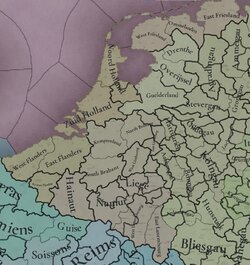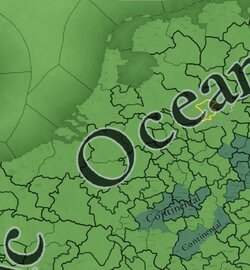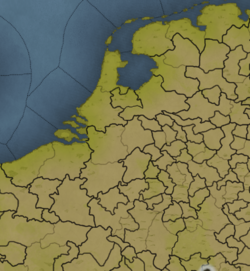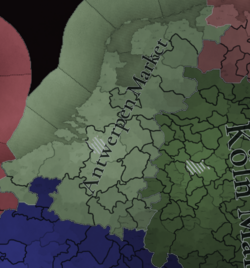- Joined
- Feb 13, 2020
I missed that in addition to Tinto Talks which are the weekly dev diaries on Wednesday, there are now also Tinto Maps, posted last Friday showcasing the Low Countries. It was stated that all parts of the world will be showcased this way, allowing for feedback and changes before launch. The most interesting thing imo is that terrain has now been split into topography, climate, and vegetation.

"The regional situation in 1337. The counties of Hainaut, Holland, and Zeeland are ruled by William of Avesnes, who is married to Joanna, daughter of Duke John III of Brabant. Another John, the Duke of Luxembourg, might be the strongest power, as he is also the King of Bohemia. The County of Flanders is the wealthiest country in the region, controlling such important cities as Brugge and Ghent. Up in the north, we have other interesting countries, such as the Bishopric of Utrecht or the Republic of Frisia (you might notice that we're using a dynamic custom country name for them, 'Frisian Freedom')."

Locations

Provinces

Climate

Topography

Vegetation
"We are aware that the Netherlands looked differently in the 14th century, as several land reclamations took place during the Late Medieval and Early Modern periods, but we are using a 20th-century version of the map for the sake of consistency. Most of the regions throughout the world would look quite different from nowadays, and documenting those changes (especially the coastline shapes) would be a non-trivial problem to resolve. As a side note, we already removed Flevoland from it, and have already identified some other modern ones that slipped through and we'll eventually remove them, as well."

Cultures
"The stripes mean that there are pops of different culture inhabiting in those location. Also, the German and French cultures are WIP, we’ll show you a proper version on later Tinto Maps. "

Religions

Goods
"Goods get regularly swapped around here and there to have a balance between geographical and historical accuracy, and gameplay purposes. So take this as the far-from-final current version of them."

Markets
"We reinstated a Low Countries market centered on Antwerpen, after doing some balance tweaks that made it more viable."

"The regional situation in 1337. The counties of Hainaut, Holland, and Zeeland are ruled by William of Avesnes, who is married to Joanna, daughter of Duke John III of Brabant. Another John, the Duke of Luxembourg, might be the strongest power, as he is also the King of Bohemia. The County of Flanders is the wealthiest country in the region, controlling such important cities as Brugge and Ghent. Up in the north, we have other interesting countries, such as the Bishopric of Utrecht or the Republic of Frisia (you might notice that we're using a dynamic custom country name for them, 'Frisian Freedom')."

Locations

Provinces

Climate

Topography

Vegetation
"We are aware that the Netherlands looked differently in the 14th century, as several land reclamations took place during the Late Medieval and Early Modern periods, but we are using a 20th-century version of the map for the sake of consistency. Most of the regions throughout the world would look quite different from nowadays, and documenting those changes (especially the coastline shapes) would be a non-trivial problem to resolve. As a side note, we already removed Flevoland from it, and have already identified some other modern ones that slipped through and we'll eventually remove them, as well."

Cultures
"The stripes mean that there are pops of different culture inhabiting in those location. Also, the German and French cultures are WIP, we’ll show you a proper version on later Tinto Maps. "

Religions

Goods
"Goods get regularly swapped around here and there to have a balance between geographical and historical accuracy, and gameplay purposes. So take this as the far-from-final current version of them."

Markets
"We reinstated a Low Countries market centered on Antwerpen, after doing some balance tweaks that made it more viable."
















